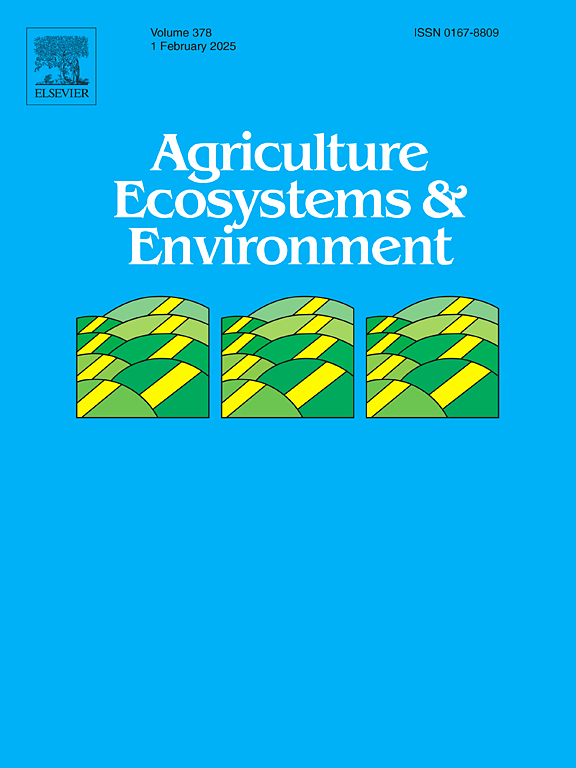Grassland litter decomposition is accelerated by herbivore dung deposition via changes in bacterial communities
IF 6
1区 农林科学
Q1 AGRICULTURE, MULTIDISCIPLINARY
引用次数: 0
Abstract
The decomposition of herbivore dung and plant litter are two crucial ecological processes that maintain the biogeochemical cycles and functions of grazing grassland ecosystems. Herbivore dung deposition causes heterogeneous microenvironmental conditions (e.g., temperature, moisture, nutrients, and microbial activities), yet its influence on litter decomposition and the involved biotic and abiotic processes remains underexplored. This study conducted a three-year dung-litter decomposition experiment in a yak-grazed alpine pasture on the Tibetan Plateau to examine how dung deposition influences soil microclimate, litter chemical quality, extracellular enzyme activities, and microbial communities, and how these factors collectively regulate the decomposition of Elymus nutans litter, a dominant plant species in the region. Results showed that dung deposition accelerated litter mass loss by 22 %, primarily by enhancing the degradation of cellulose and hemicellulose. Dung deposition raised soil temperature by 1.5 °C and increased moisture content by 19 % on average, and enriched litter chemical quality by reducing the carbon to nitrogen (C: N) ratio and increasing N, dissolved organic C, and dissolved organic N content. It also boosted the activities of lignocellulose-degrading enzymes, including β-1,4-glucosidase (BG), β-1,4-xylosidase (BX), β-D-cellobiosidase (CBH), xylanase (XYL), peroxidase, and polyphenol oxidase. Changes in microbial communities were distinct: bacterial communities responded strongly in the first two years, driven by improved litter chemistry and the introduction of dung-derived bacteria, while fungal community shifts occurred mainly in years 2–3, influenced by C and N dynamics (e.g., C: N ratio). Dung deposition increased the abundances of bacterial phyla such as Bacteroidota and Proteobacteria, which correlated positively with cellulase activity (BG, BX, CBH, and XYL) and the degradation of cellulose and hemicellulose in litter. Structural equation modeling revealed that the acceleration of litter decomposition by dung deposition was predominantly mediated by bacterial communities and their associated enzymatic activities. Overall, this study underscores the pivotal role of herbivore dung deposition in accelerating litter decomposition via regulating bacterial-driven processes. The findings offer valuable insights for grassland management and enhance predictions of herbivore dung deposition impacts on ecosystem functions under global herbivore expansion.
求助全文
约1分钟内获得全文
求助全文
来源期刊

Agriculture, Ecosystems & Environment
环境科学-环境科学
CiteScore
11.70
自引率
9.10%
发文量
392
审稿时长
26 days
期刊介绍:
Agriculture, Ecosystems and Environment publishes scientific articles dealing with the interface between agroecosystems and the natural environment, specifically how agriculture influences the environment and how changes in that environment impact agroecosystems. Preference is given to papers from experimental and observational research at the field, system or landscape level, from studies that enhance our understanding of processes using data-based biophysical modelling, and papers that bridge scientific disciplines and integrate knowledge. All papers should be placed in an international or wide comparative context.
 求助内容:
求助内容: 应助结果提醒方式:
应助结果提醒方式:


